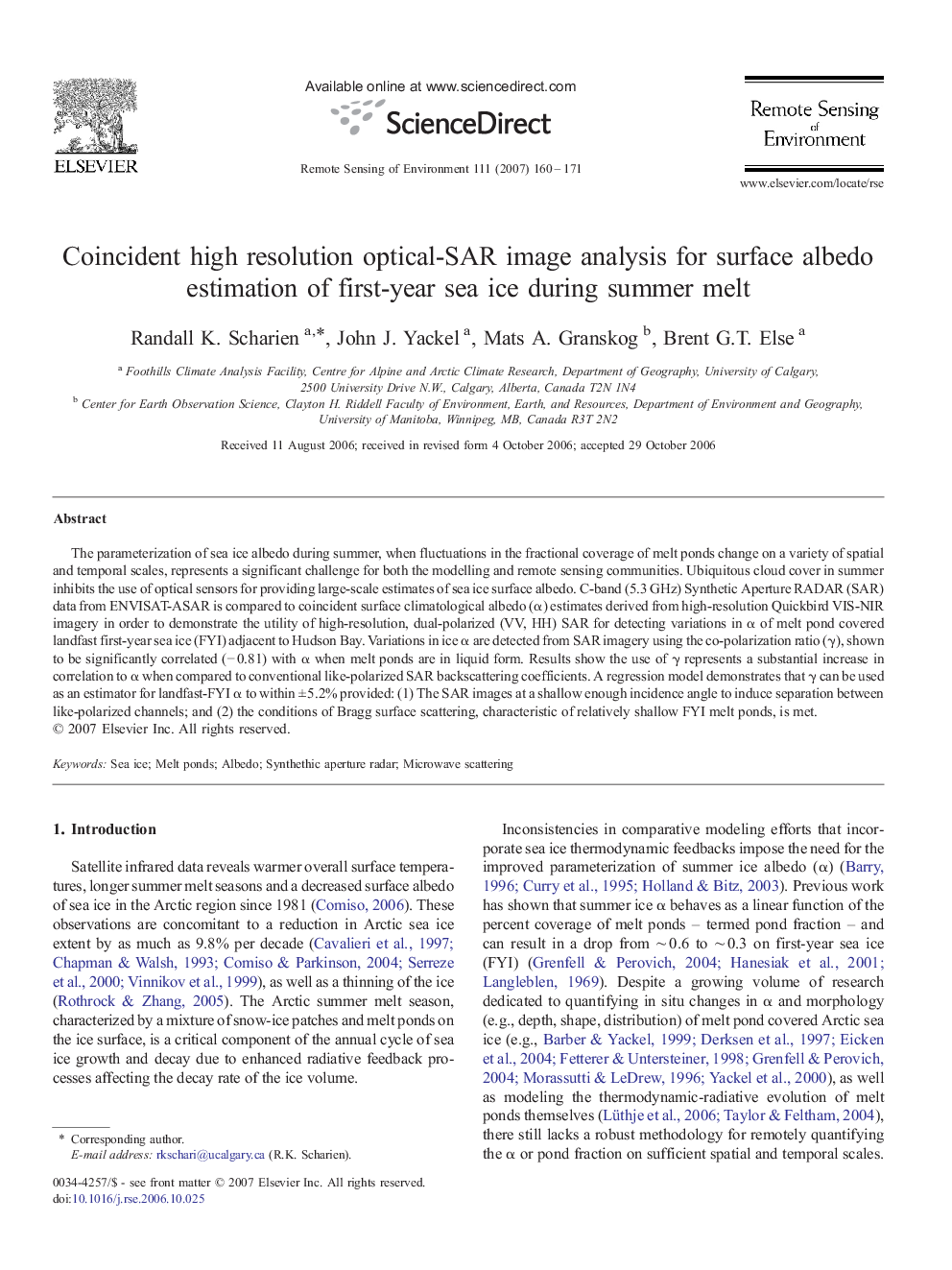| Article ID | Journal | Published Year | Pages | File Type |
|---|---|---|---|---|
| 4460416 | Remote Sensing of Environment | 2007 | 12 Pages |
The parameterization of sea ice albedo during summer, when fluctuations in the fractional coverage of melt ponds change on a variety of spatial and temporal scales, represents a significant challenge for both the modelling and remote sensing communities. Ubiquitous cloud cover in summer inhibits the use of optical sensors for providing large-scale estimates of sea ice surface albedo. C-band (5.3 GHz) Synthetic Aperture RADAR (SAR) data from ENVISAT-ASAR is compared to coincident surface climatological albedo (α) estimates derived from high-resolution Quickbird VIS-NIR imagery in order to demonstrate the utility of high-resolution, dual-polarized (VV, HH) SAR for detecting variations in α of melt pond covered landfast first-year sea ice (FYI) adjacent to Hudson Bay. Variations in ice α are detected from SAR imagery using the co-polarization ratio (γ), shown to be significantly correlated (− 0.81) with α when melt ponds are in liquid form. Results show the use of γ represents a substantial increase in correlation to α when compared to conventional like-polarized SAR backscattering coefficients. A regression model demonstrates that γ can be used as an estimator for landfast-FYI α to within ± 5.2% provided: (1) The SAR images at a shallow enough incidence angle to induce separation between like-polarized channels; and (2) the conditions of Bragg surface scattering, characteristic of relatively shallow FYI melt ponds, is met.
